Christian Becksvoort’s Essential Non-Woodworking Tools
An arsenal of items to make your woodworking life more efficient
I have a variety of tools in my shop that you won’t find in a woodworking catalog or on the average woodworking website. Most migrated from my house, since they are as useful there as they are in my shop. They were soon needed back in the house, however, so I’ve duplicated all these items in my shop because I found myself reaching for them over and over.
Waxing poetic
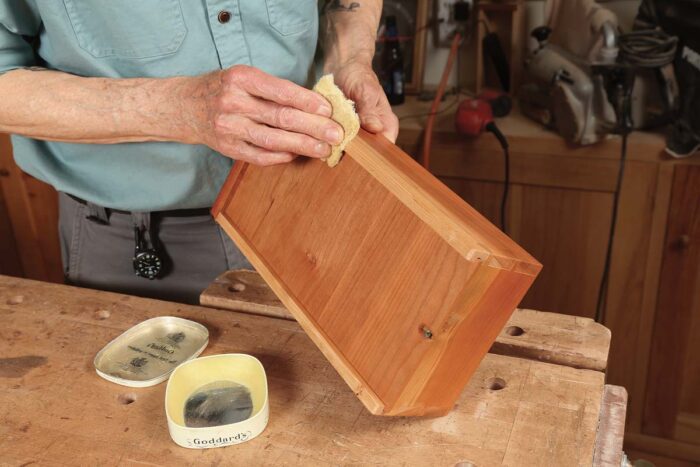
The most useful non-woodworking material is wax. A slab of paraffin wax will last decades when used to ease friction on table-saw tops, jointer tables, planer tables, miter-gauge tracks, hand-plane bottoms, and along wooden sacrificial fences. For easing screws into hardwood, I prefer beeswax—actually, honeycomb wax sheets because they are easy to store and use, and one rolled candle has lasted me over two decades. Break off a tiny piece, roll it into a ball, and apply it to the screw tip. Finally, paste wax can be used to lubricate table-saw gears without attracting dust.
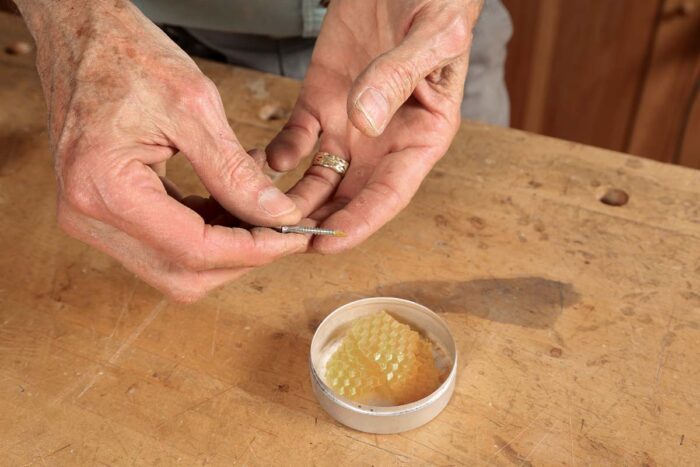
I don’t use wax on the outside surfaces of furniture; wax encourages heat rings from hot beverage cups. I do use wax on interior surfaces, however; scented waxes are a plus there.
I also use wax wherever a drawer makes contact with its cabinet: runners, kickers, cabinet sides; and drawer bottoms, sides, and tops. The combination of a perfect fit and paste wax is as good as metal glides.
Taping tips
Tape is invaluable in woodworking, and there are many different types that come in handy for a myriad of situations: duct tape, blue tape, green tape, mesh tape.
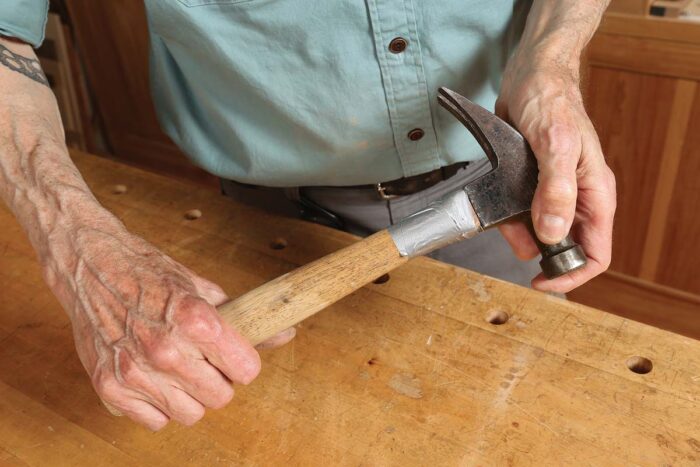
Duct tape can be used for a variety of quick fixes, whether they are intended to be temporary or permanent. It is sticky and uniquely strong. Got a cracked mallet handle? Duct tape. Want to attach a vacuum hose to your router? Duct tape.
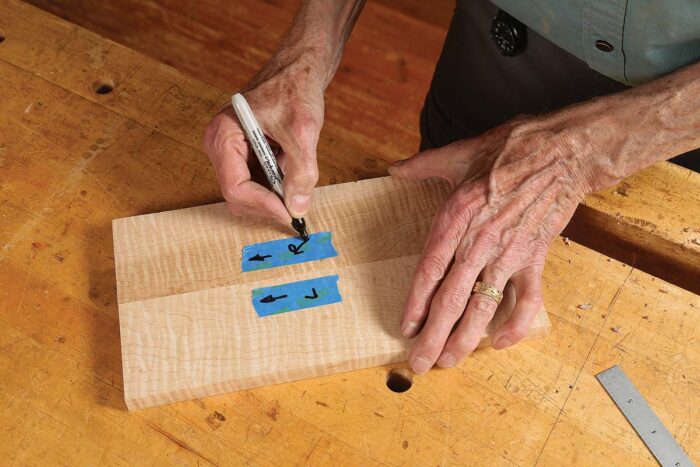
I use blue tape for layouts, labeling, and even as a depth stop on some operations. Blue tape is relatively inexpensive and gets used a lot in my shop.

Green tape is a bit pricier but much stronger and stretchier, so I use it as a clamp when I’m edging plywood with solid wood and when I’m gluing up mitered frames or boxes.
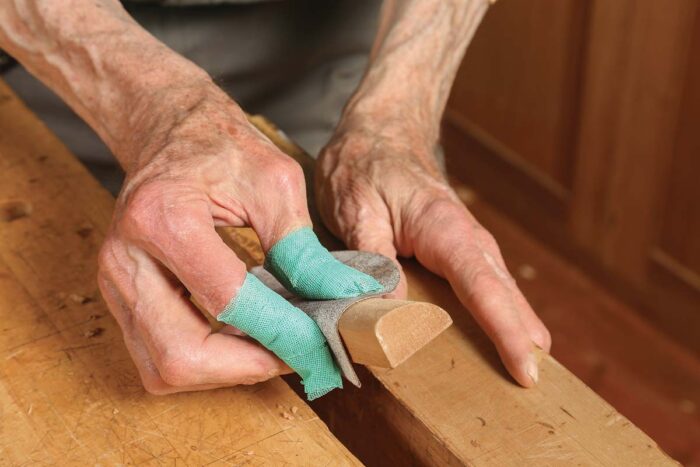
I also use Flexx-Rap when hand-sanding. It’s a mesh tape coated with latex that sticks only to itself. It’s great for wrapping fingers when you’re sanding moldings or end grain—no more hot fingers or blisters.
Gluing gadgets
When it comes to gluing, there are a few items that have become indispensable in my routine. They are all inexpensive or free, easy to use, and make gluing tasks a breeze. I always have a putty knife, paint scraper, wax paper, and a few old credit cards close at hand.
 |
 |
Putty knives can be used for applying filler and plastic wood, heated for applying stick shellac, and used to scrape up partially dried glue. There is always a paint scraper on my glue-up bench. It makes quick work of removing dried glue, can level uneven spots in poor glue-ups, and can scrape away stains and surface defects. Wax paper is good for more than sandwiches. When doing small glue-ups, throw a piece of wax paper under the work. Glue won’t stick to it, and it will protect the surface.
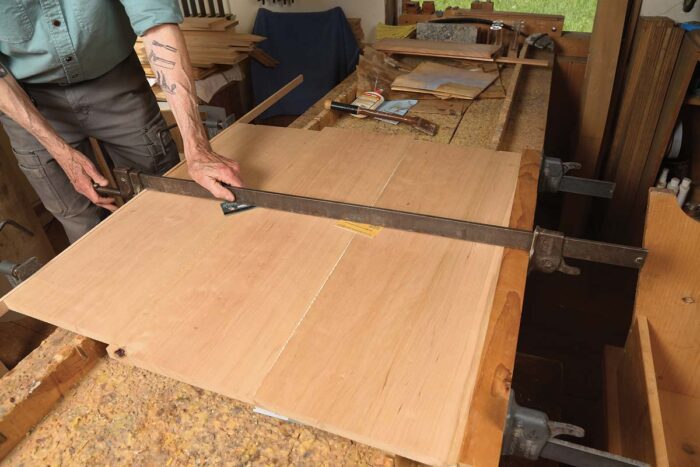
Old credit cards—with the name and numbers scratched off, of course—have a few uses in my shop. They are wonderful glue spreaders. I simply squeeze glue across the work and then use a credit card to spread it evenly and quickly. I also use credit cards as spacers under clamps to elevate the clamps just slightly off the wood.
Pry those cans open

Every toolbox needs a paint can opener. Yes, you can use a screwdriver to open paint cans, but the loop end openers, especially the older ones with the wider curved ends, fit under the lip of a can lid with less deformation of the lid. When you put the lid back on, it will seal tighter and the contents will be preserved better. In addition, you can use the loop end to pry off bottle caps.
Custom glass-cutting
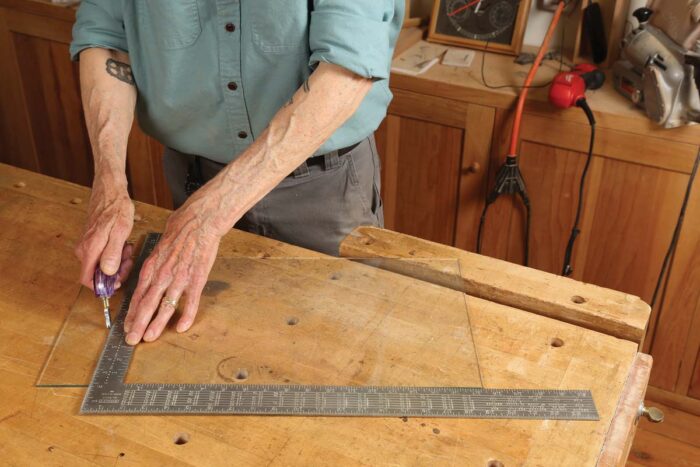
Glass cutters may or may not find use in your shop. I frequently make glass doors and always have a big sheet of glass around that needs cutting. If you use a fair amount of glass in your work, you’ll want a cutter; otherwise, you can just head for the hardware store and get your glass cut for you. It is more expensive and time-consuming to farm out your glass-cutting, though.
Scissor hands
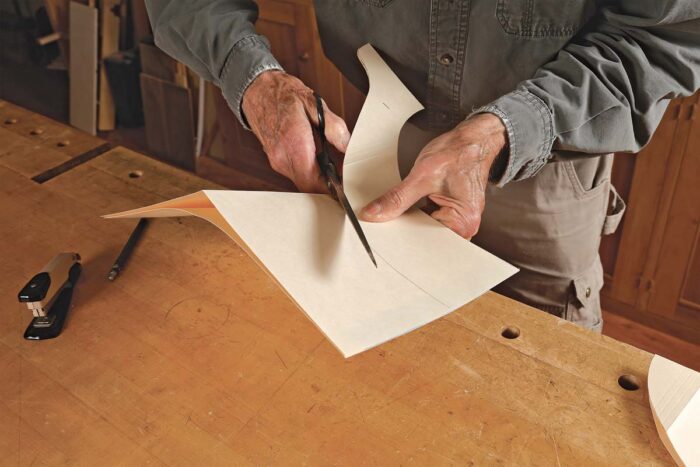
A good pair of scissors is essential. I make a fair number of patterns from manila file folders—for anything from curves, small parts, and different-size objects—and I cut them all with scissors. This is much faster and less wasteful than using wood for patterns. Most old-fashioned, all-metal scissors will do, as will the newer ones with more-comfortable plastic handles. I find an 8-in. pair to be a good size. Keep your scissors sharp to ensure clean, precise cuts.
Contributing editor Christian Becksvoort is a semi-retired woodworker in New Gloucester, Maine.
Fine Woodworking Recommended Products

Bessey Band Clamp
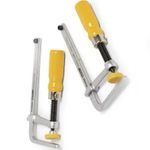
MicroJig Matchfit dovetail clamps
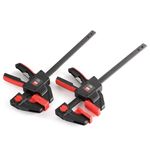
Bessey EKH Trigger Clamps

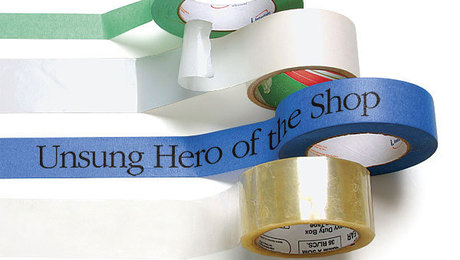

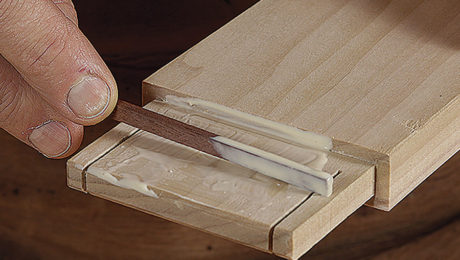

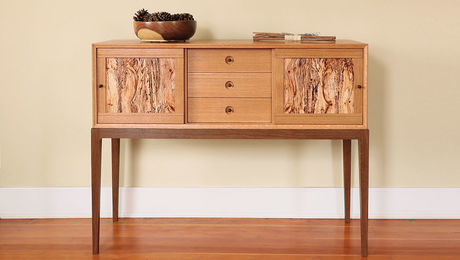
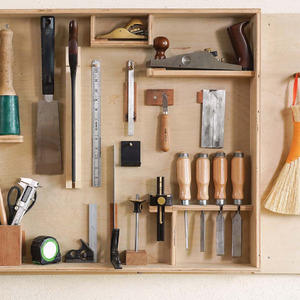
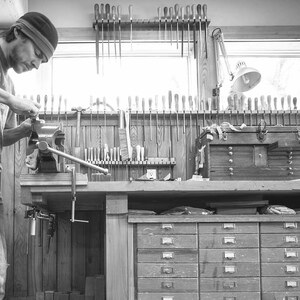
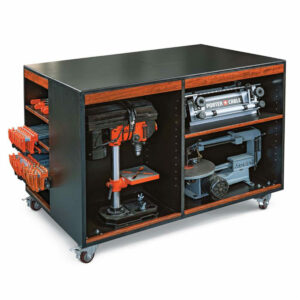

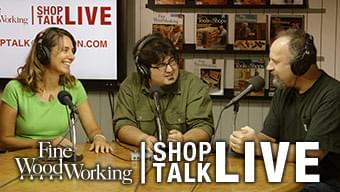



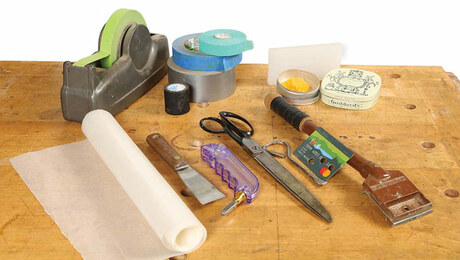
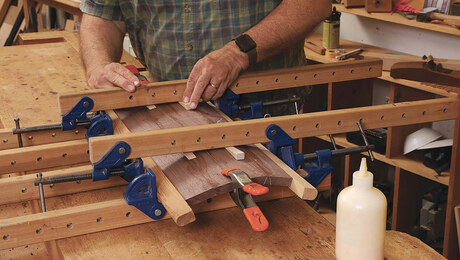
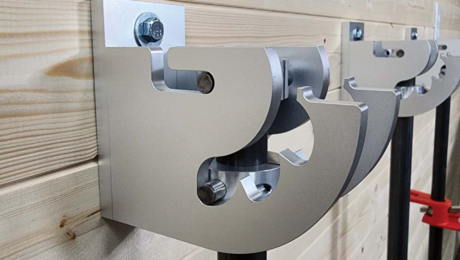



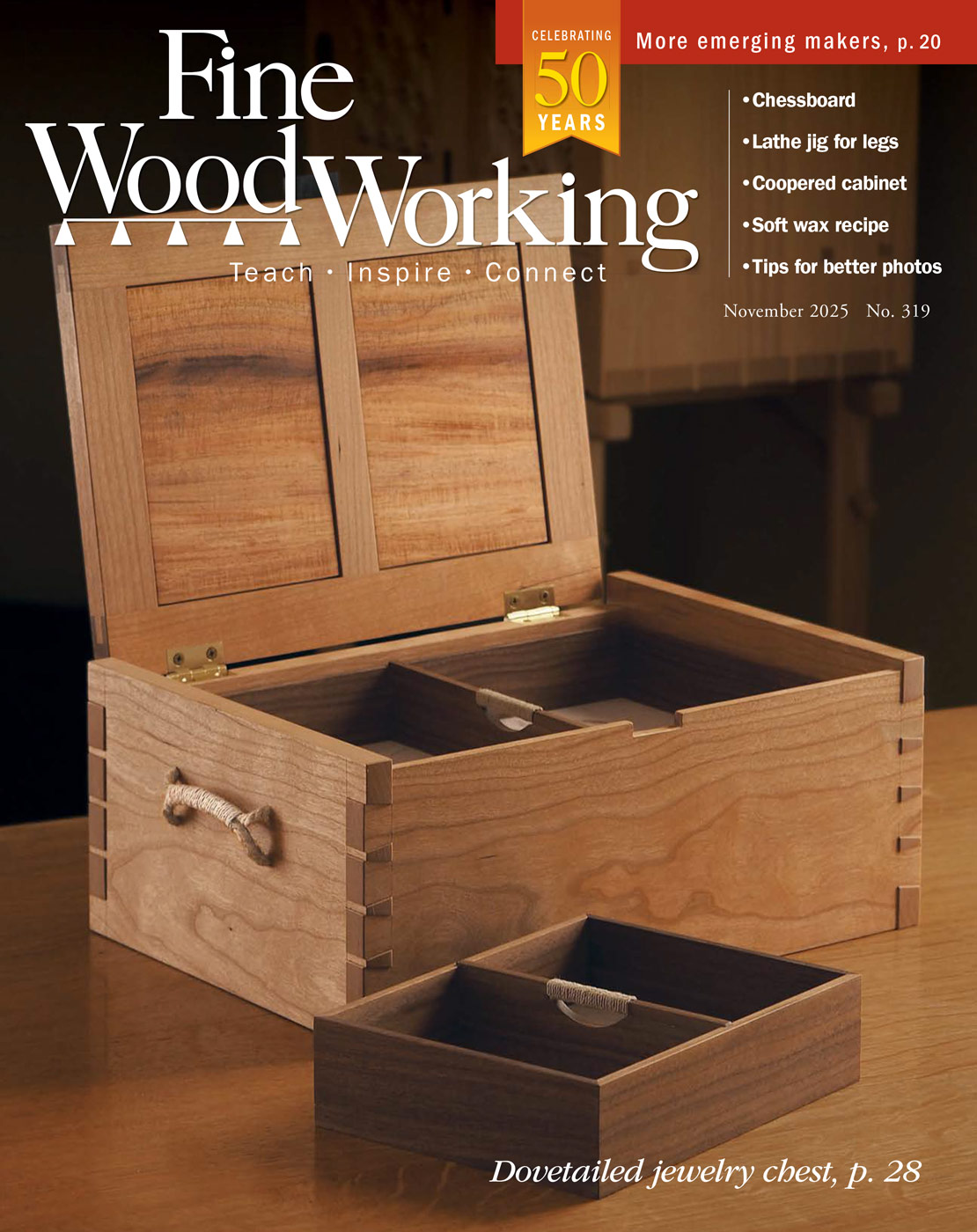
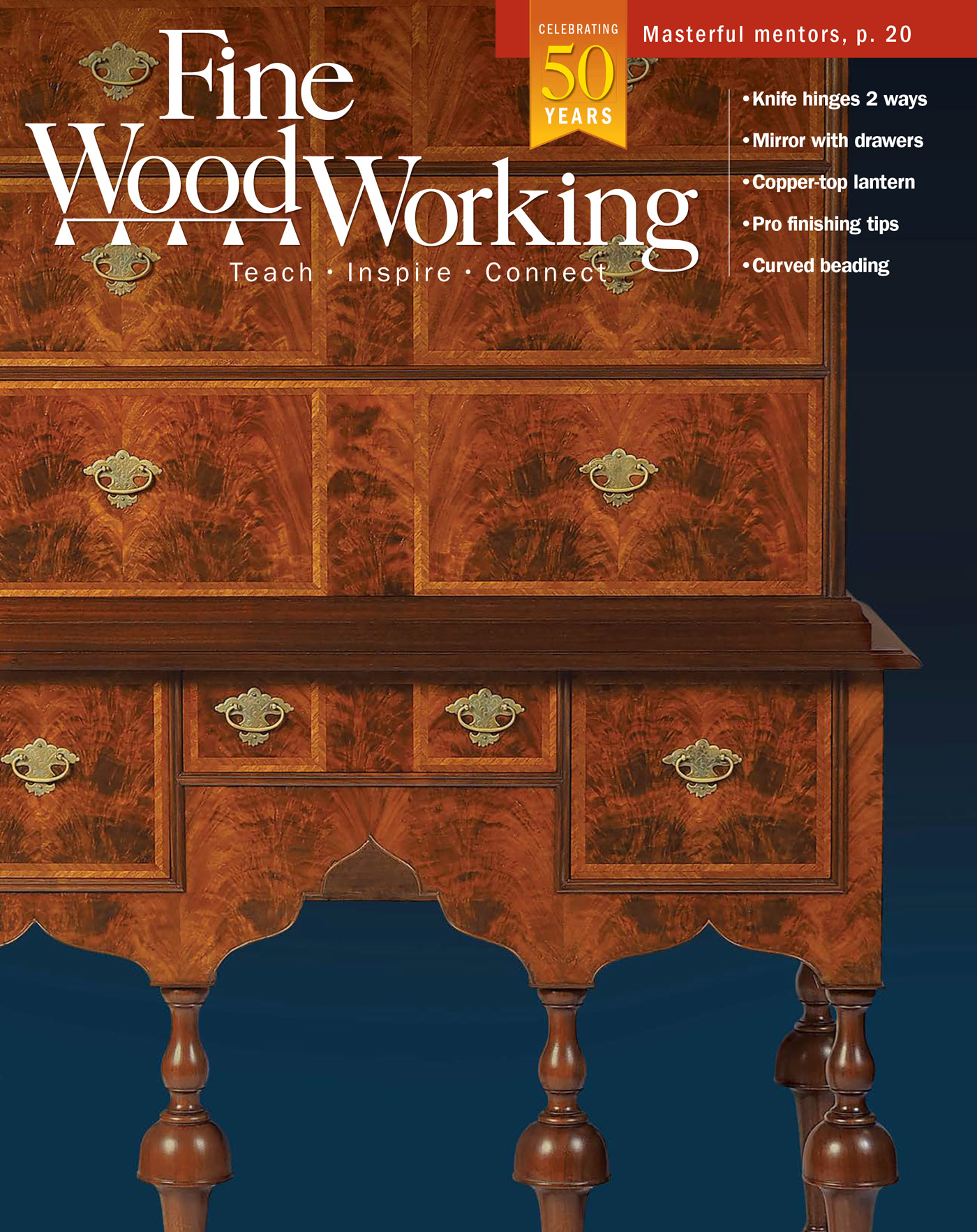
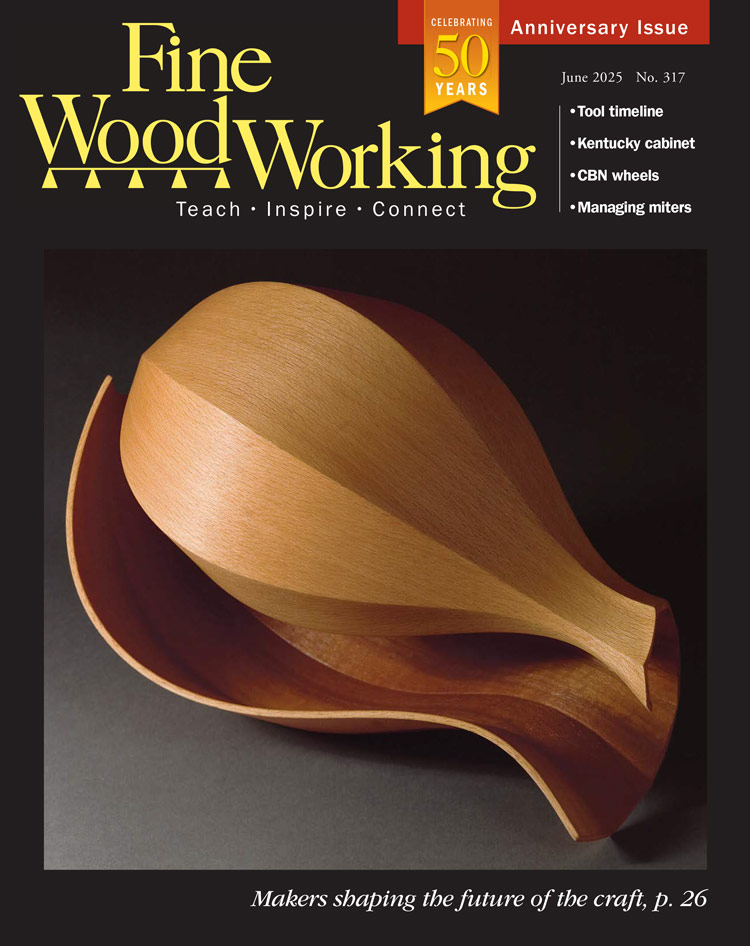
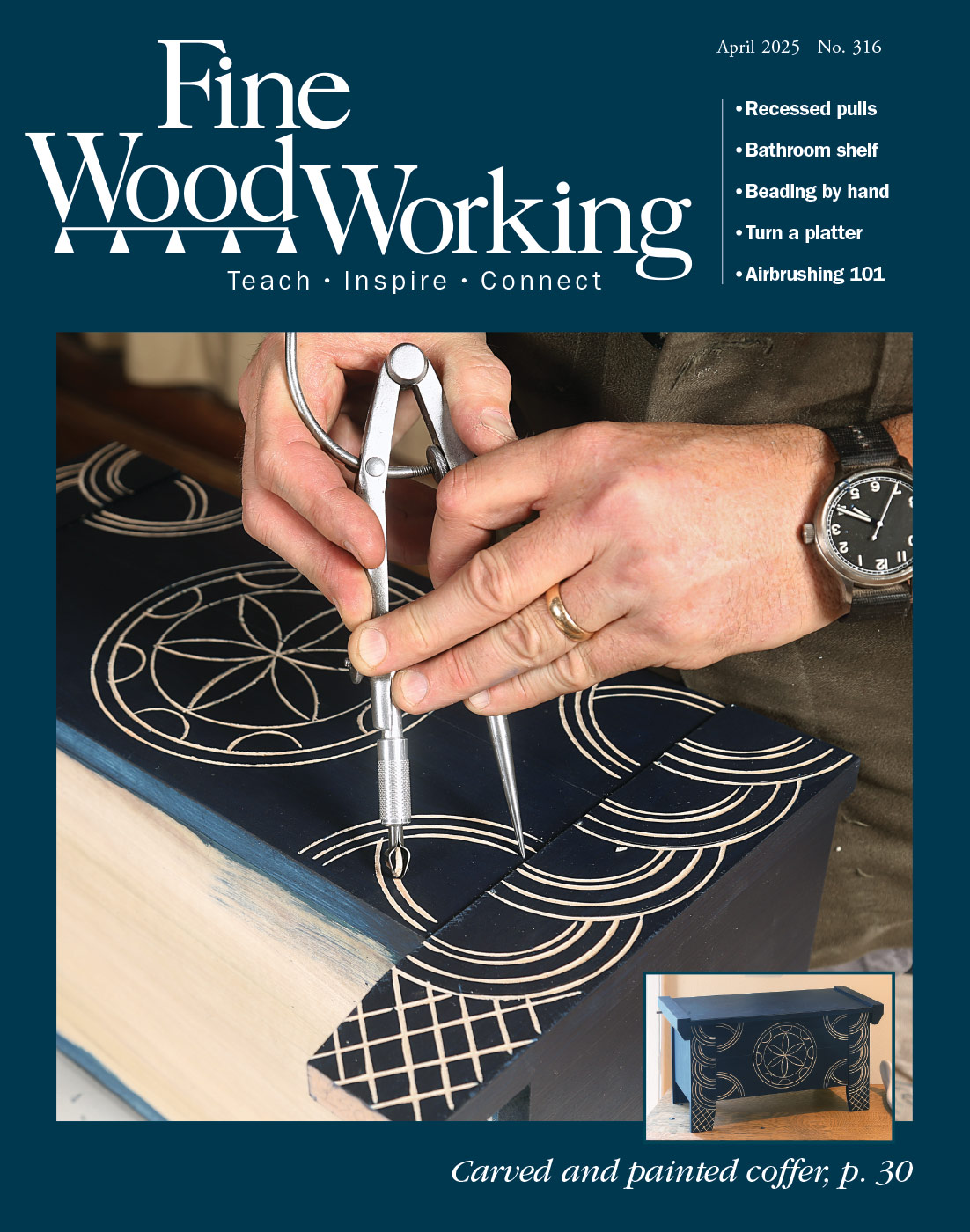
Comments
One use of masking tape I finally started - Putting a layer of tape on my handscrew faces. Saves a ton of time cleaning them up
What is the green tape? Is it vinyl and what brand is preferred?
From Chris:
The green tape is 3M #233 available at most hardware stores or Lee Valley 25U03.30
From Ben:
I've never once seen anything but Frog Tape in green at my hardware store.
From Becksvoort’s article: “Green tape is a bit pricier but much stronger and stretchier”
From the article on tape at the bottom of the page from Ferrazzutti #205–May/June 2009 Issue:
The blue painter’s tape I use is the 14-day-release type (3M, #2090) rather than the 60-day type, which has a lower tack. I prefer the crepe style over the smooth because it stretches better, pulling seams and joints together. Compared with green tape, blue tape takes a fair bit of force before it snaps, so it can handle light clamping tasks. It has greater tack but releases well. It also costs more.
Ferazzutti says the blue is stronger than green so I thought perhaps this is a different tape. I guess I buy a roll of different types an make my own call.
I went to 3M data sheets. Blue - 6-7% stretch breakage. Green - 10%. I'm guessing that is at equal width.
Seeing this article makes me feel like I've been promoted! I've used old credit cards and hotel room key cards for years, not only as glue spreaders and shims, but also as glue squeeze-out scrapers (custom shaped with sturdy scissors). The small plastic salad dressing containers from take-out restaurants make very good epoxy or glue / sawdust mixing containers. This feels like the Red Green Show's take on fine woodworking.
Waxing wood running surfaces I heat them gently with a torch then rub on paraffin, then reheat slightly to melt it in. Wipe off excess. This is an old wood XC-Ski waxing thing.
Log in or create an account to post a comment.
Sign up Log in